Quotes to Inspire You from Women Conservationists
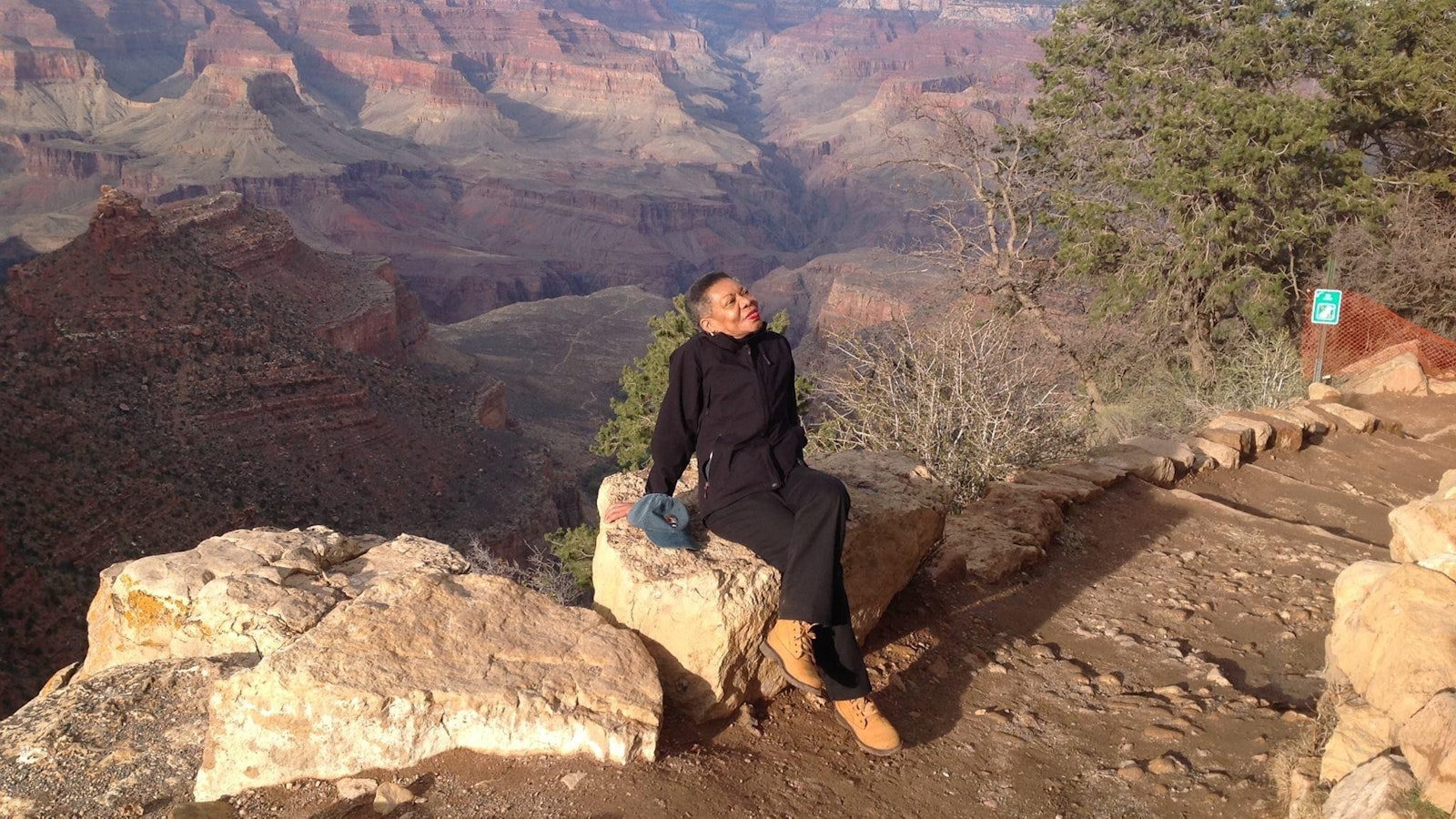
.
.
Women have always been involved in national parks and conservation, all while exploring, cherishing, and defending the environment and our cultural heritage. Despite a deep commitment, women’s voices have not been elevated to the degree that men’s voices have in the conservation movement. But it’s not for lack of trying.
Women conservationists of both today and yesterday challenge societal expectations and gender norms to simply exist in nature, to do what they love, and to be heard. We believe that the contributions of women, especially women of color, have been underrecognized for far too long, and that’s why the National Park Foundation is committed to unearthing, elevating, and amplifying women’s stories through our Women in Parks initiative.
We draw inspiration and strength from the women who have come before us who make it possible to do what we love: explore, positively impact, and cherish the outdoors. And this legacy continues through the women who are leading the conservation movement today.
These quotes are a source of inspiration for anyone who loves the very things that are meant for all of us (but historically have not always been for all of us): our national parks.
Margaret Mead was an innovator in the then-new study of anthropology and received her Ph.D in 1929 after studying with Franz Boas. She went on 24 expeditions to Samoa and New Guinea to study adolescents among native people. Margaret wrote her signature study Coming of Age in Samoa on the same island National Park of American Samoa. She continued her work in the United States studying gender, culture, sexuality, motherhood, and more throughout her six-decade long career. Today, she is regarded as one of the most influential anthropologists, a challenger of homophobia in science, inspirer of anthropological feminism, and crusher of gender roles.
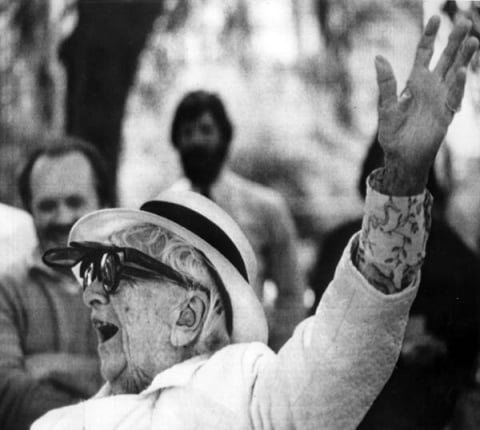
It may be hard to believe that the Everglades was once written off as a useless swamp, but thanks to Marjory Stoneman Douglas, who recognized it as an incredible resource, the important ecosystem is intact today. Marjory Stoneman Douglas began her lifelong vocation of writing and activism with the support of her parents at the Miami Herald in 1915, where she penned articles on feminism, racial justice, and conservation. In 1947, Marjory published The Everglades: River of Grass, the same year Everglades National Park was established to advocate for the protection of wetlands against commercial development.
Marjory’s outspoken activism helped preserve Everglades National Park, Big Cypress Preserve, and Biscayne National Park. In 1978, Congress designated approximately 1.3 million acres of the Everglades as wilderness, and in 1998 dubbed it the Marjory Stoneman Douglas Wilderness to honor her indefatigable work to preserve the environment for future generations. She was awarded the Presidential Medal of Freedom in 1993 for her successes.
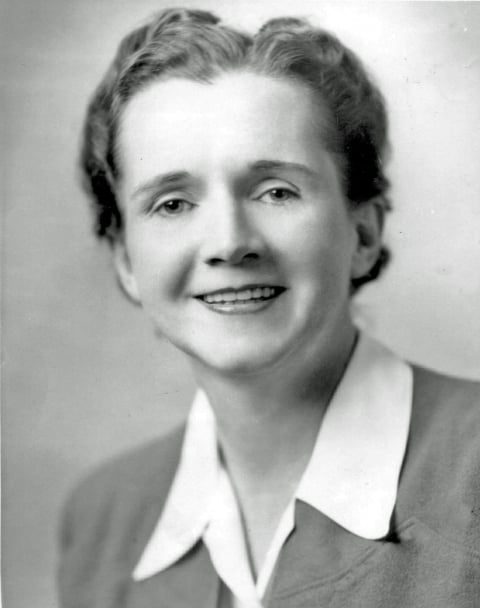
In 1962, Rachel Carson sounded the alarm against the use of harmful pesticides like DDT through her groundbreaking book, Silent Spring. Her trailblazing book spurred President Kennedy to create a committee to investigate her thesis and the chemical industry initiated a campaign to discredit her. Rachel, unshakably dedicated to her work, testified in front of Congress while going through treatment for breast cancer. Prior to the publication of her book, Rachel earned multiple scientific degrees, started her career at the Fish and Wildlife Service, and rose through the ranks at the Department of Interior, all remarkable achievements for women in science at the time. She is credited with igniting the modern environmental movement, her influence in national parks is far-reaching. Rachel Carson’s house is on the National Register of Historic Places, a program of the National Park Service that preserves historic and archeological resources.
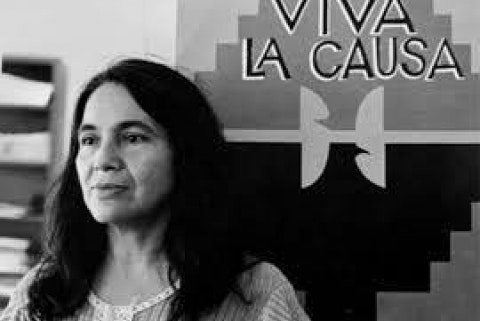
Dolores Huerta knew women can accomplish great things because of the spirit that was instilled within her by her mother, a respected community activist who opened the doors of her hotel to low-wage workers. As a teacher, Dolores’ heart ached when her students, the children of farm workers, came to school without shoes or food. She quickly resolved that she could have a greater impact by organizing their parents for better wages and working conditions. In 1962, Dolores and a like-minded colleague, César Chávez, launched the National Farm Workers Association, which led to decades of speaking, organizing, and rallying for workers’ rights. While Dolores’ work may not be considered that of a typical conservationist, she understood the relationship between workers, their families, and the land they labored upon. Dolores Huerta’s story is told at the César E. Chávez National Monument.
To many, Lady Bird Johnson is remembered as the First Lady who campaigned to beautify America’s public spaces. To NPF, she is also remembered as the visionary who helped to establish the National Park Foundation, which was chartered by Congress in 1967.
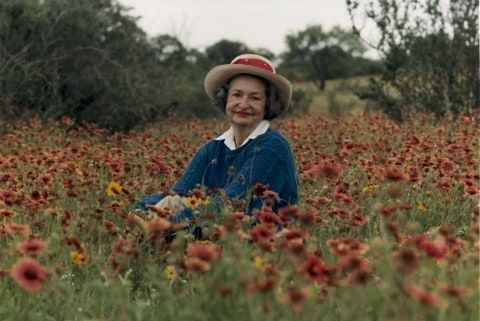
Her mission was rooted in the desire to improve the quality of life for Americans, and was complex, involving clean water, air, and roadsides, as well as the preservation of historic landmarks, hardscapes, parks, and wilderness areas. She created a coalition, mobilized individuals, roused school groups, and convened task forces. Her work reached beyond a public relations campaign; it made real, lasting change we still see today, particularly in her adopted hometown of Washington, D.C. She was ultimately awarded a Presidential Medal of Freedom for her conservation work.
As one of NPF’s first advocates, her legacy of beautifying America lives on throughout the National Park System’s dedication to conservation. Her presence is also felt at Lady Bird Johnson Park within George Washington Memorial Parkway, the Lady Bird Johnson Grove in Redwood National Park, and First Ladies National Historic Site, honoring the women who have lived within one of our nation’s most famous national parks – the White House.
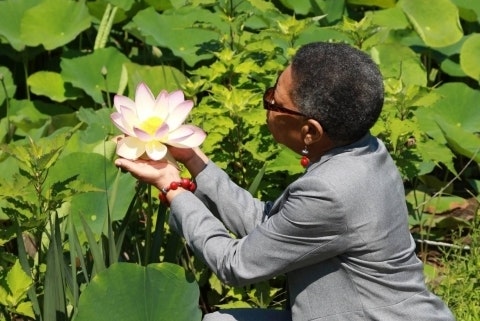
Audrey Peterman’s love for national parks dates to 1995 when she and her husband Frank embarked on a 12,000-mile cross-country road trip. It was their first time visiting U.S. national parks and they found themselves immediately hooked. But during the trip, they noticed something that stuck with them: they saw very few people of color among park staff and visitors. That experience inspired Audrey and Frank to form an environmental consulting and publishing firm to help the national parks community be more inclusive and raise awareness about the connections between national parks and communities of color. Among her many contributions, Audrey co-founded the Diverse Environmental Leaders Speakers Bureau and over the years has given many book talks and been a guest speaker at parks including Grand Canyon National Park, National Capital Parks-East, Everglades National Park, and Big Cypress National Preserve.
Audrey reminds us that national parks show how integral people of color are to American history because people of color built the country itself. Audrey’s decades of experience, work, and activism have made her a leader at the intersection of national parks, environmentalism and inclusion, having written multiple books on the subject, including “Legacy on the Land: A Black Couple Discovers Our National Inheritance and Tells Why Every American Should Care,” “Our True Nature Finding a Zest for Life in the National Park System.,” and “From My Jamaican Gully to the World."
MaVynee Betsch’s legacy is of love for one’s family, hometown, and nature. Known as the Beach Lady, she spent the last 30 years of her life working to preserve her great grandfather’s contributions to local history. Abraham Lincoln Lewis was an African American businessman during the Great Depression who founded a Black beach resort so his family and friends, as well as celebrity visitors like Zora Neale Hurston, Joe Louis, and Cab Calloway, could experience the beauty of the shore despite segregation and Jim Crow. MaVynee wanted the world to know her family's history, so she opposed the eventual sale of a large portion of the beach and a giant sand dune in the mid-1990s to a golf resort. In 2003, the resort transferred the dune in MaVynee's honor to the National Park Service and was finalized a year later. Today, the sand dune is rests within Timucuan Ecological and Historic Preserve. MaVynee is remembered as a beloved Gullah/Geechee ancestor who eschewed her own family’s fortune to fight for what was most important to her.
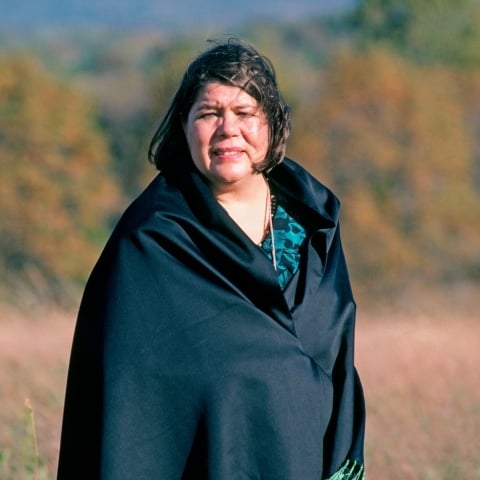
As a preteen, Wilma Mankiller’s family was moved to San Francisco under the Bureau of Indian Affair’s Relocation Program. During her formative years, San Francisco of the ‘60s ignited Wilma’s lifelong desire to fight for justice. With her family, she engaged in protesting the occupation of Alcatraz Island. From November 1969 to June 1971, Indians of All Tribes, Inc. occupied Alcatraz Island to reclaim the land government policies had stolen. Approximately 100 people occupied the island and the continued occupation garnered national attention for the movement. Eventually, armed federal marshals, FBI agents, and special forces police swarmed the island and ended the occupation by violently removing women, children, and men from the island. The terms demanded by All Tribes, Inc. were not met, though federal laws were created, which demonstrated new respect for aboriginal land rights and for the freedom of American Indians to maintain their traditional cultures.
During this time, Wilma realized she as though she was exactly where she should be, both on the island and with freedom fighters. She continued her activism through volunteer work, raising money for a clean water project, and working alongside other influential activists in her community. Wilma was elected the first female Principal Chief of the Cherokee Nation three times and focused on strengthening tribe enrollment and the health care system. President Bill Clinton awarded her the Medal of Freedom in 1998.
Who would you add to this list? Tell us in the comments. And to join the conversation on social media, use #WomenInParks.